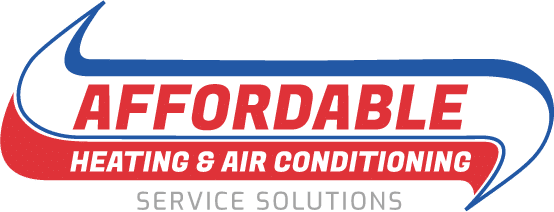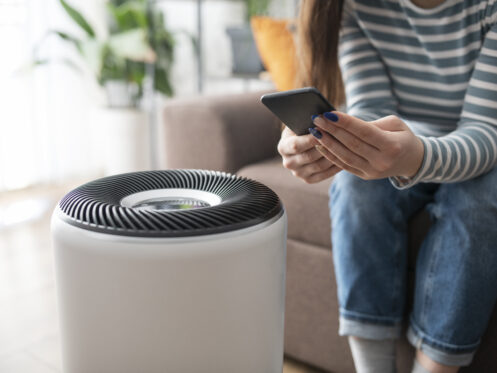The U.S. EPA cautions that indoor air pollution is one of the top health risks facing Americans. A whole-home air purification system is an appliance that will remove pollution from your indoor air. These systems draw air in, filter it of impurities and return that air to your living spaces. These systems do vary from one brand and model to the next, but they’re generally fairly similar in how they function.
HVAC Integration
Air purifiers are typically portable or integrated. Portable doesn’t necessarily mean small. There are room purifiers that provide 1,000 square feet of coverage or more. If you want enough coverage for an entire home, you’ll generally need an integrated system. What integrated means in this context is that the air purifier takes advantage of the existing HVAC equipment.
The main components here are the air handler and the ductwork. Not needing an air handler makes an air purifier a lot less expensive. It also means that the air purifier can provide inline filtration. In other words, it’s filtering the air before it gets to your furnace, air conditioner, heat pump and so forth. This protects your HVAC equipment in addition to providing cleaner air to breathe.
CFM and ACH
A defining characteristic of an air purifier is how much air it can move. Your system’s blower will usually not be a limiting factor. One way we measure airflow is cubic feet per minute (CFM). A more useful metric for consumers is air changes per hour (ACH). ACH depends not only on square footage but ceiling height. It’s important to size an air purifier for your home. If that unit has a 4 ACH rating, it’ll filter all the air in your home four times an hour.
The general recommendation is that you should opt for 4 ACH at a minimum. The CDC recommends 5 ACH for the average American home. If you have a family member with asthma or bad allergies, you may want to opt for 6 ACH or higher.
Prefiltration
Most air purifiers will have at least three filtration stages. The system pushes the air through these stages. The first stage is typically a prefilter, which is a type of mechanical filtration. This is different than the mechanical filter we’ll discuss in a bit. It’s not really there to clean your air. Instead, it blocks large particles. It does this to protect your air purifier and HVAC equipment. It also helps to preserve the other filter stages, which are generally more expensive.
Activated Carbon
The next stage is typically activated carbon. This provides some mechanical filtration as well, but that isn’t its main job. Activated carbon absorbs gases and chemicals. It helps your home smell better, but it can also extract many impurities:
- Fumes
- Smoke
- Methane
- Volatile organic compounds
HEPA Filtration
A high-efficiency particulate air (HEPA) filter is typically the primary mechanical filtration for air quality. Most air purifiers can accommodate all types of HEPA filter as long as they’re the right size. As a consumer, it’s important to note than manufacturers can use the term loosely. In fact, some HEPA filters on the market on nothing more than glorified HVAC filters.
What you want to look for is a True HEPA or medical-grade HEPA filter. True or standard HEPA removes 99.97% of all particulate matter down to 0.3 microns in size. This is good enough for most households, including those that suffer from allergies. Medical-grade HEPA removes 99.995% of all particulate matter down to 0.1 microns in size. This may be better for you if a family member has asthma or other serious respiratory condition.
UV Lamps
If you want to remove viruses and bacteria, you’ll need UV-C light. There are air purifiers available that have a built-in UV stage. Many experts prefer UV lamps instead. Your HVAC technician can install them in your ducts. This lets them take advantage of the slower moving air in the ducts.
Your Local IAQ Experts in Richmond
If you want a whole-home air purification system installed in Richmond or the surrounding areas, Affordable Service Solutions Heating & Air Conditioning is here to help. Our IAQ experts also install UV lamps and whole-home dehumidifiers and humidifiers. We also have NATE-certified technicians that install, maintain and repair all manner of heating and cooling technologies. This included furnaces, air conditioners, zoned systems, boilers, ductless mini-splits and geothermal and air-source heat pumps. Call us today or contact us online to schedule an appointment or with any questions about these products and services.


